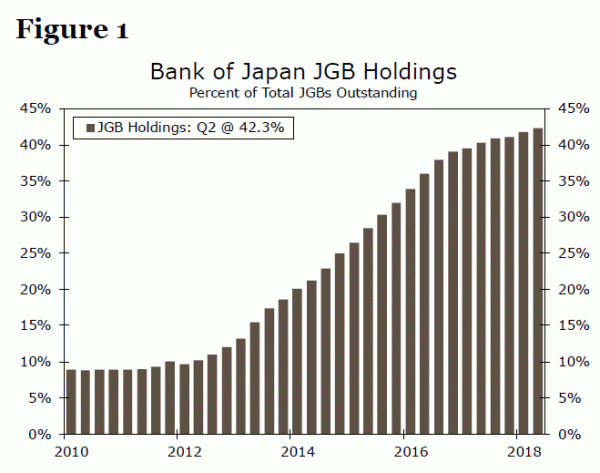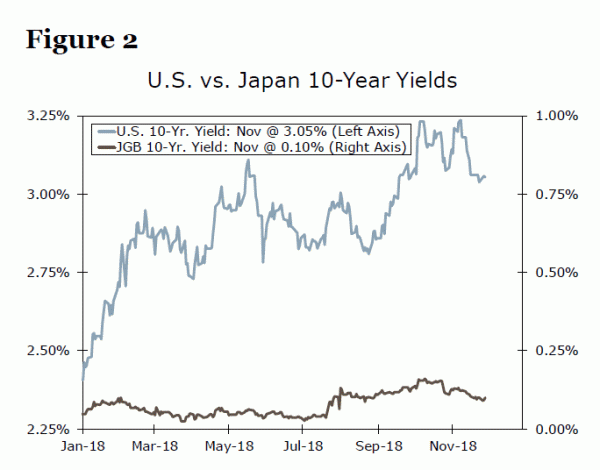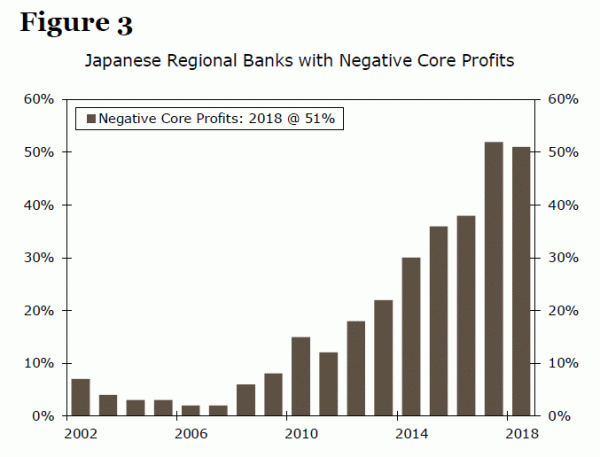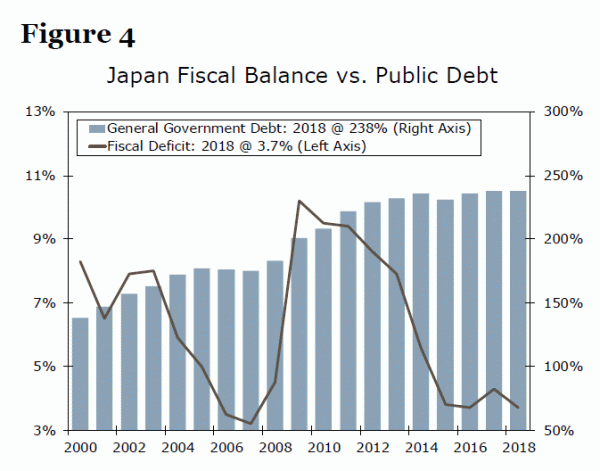Executive Summary
One key theme heading into 2019 is likely to be monetary policy convergence. We believe central banks of developed economies will continue to remove accommodative monetary policy stances and eventually follow the Federal Reserve’s path towards higher interest rates. In July of this year, the Bank of Japan (BoJ) introduced modest adjustments to its monetary policy framework, allowing for a wider trading range for yields on Japanese government bonds (JGB’s). While we believe the BoJ will continue with its ultra-loose monetary policy, it is our view the BoJ will make further adjustments towards less accommodative policy earlier than markets are currently anticipating. With Japan’s economy steady, along with the central bank’s objective to ensure financial stability, we forecast the BoJ to increase its main policy rate to 0% from -0.10% as well as widen the tolerance band to +/- 30bps on 10-year JGB’s as early as Q2-2019. We expect modest yen appreciation over the medium-term, although the pace of monetary tightening from other developed central banks will also be an important influence for the path of the yen.
Are More Monetary Policy Adjustments Coming?
Over the past few years, the central bank’s JGB holdings have risen substantially as the BoJ engaged in large scale net bond purchases, which peaked at 80 trillion yen per year. In September 2016, the central bank also transitioned to a yield curve control policy, purchasing JGB’s in an effort to maintain a 10-year JGB target yield of 0%, which it argued was a strengthening of its previous policy framework.
To date, the BoJ has remained largely committed to this policy, although it did widen the tolerance band at the July meeting this year to +/- 20bps, from +/- 10bps previously. Moreover, while the central bank’s formal guidance is that it aims to increase outstanding JGB holdings by around 80 trillion yen per year, the fact that its net purchases have been substantially below that suggests it is secondary to yield targeting. That said, the combination of the central bank’s large scale net asset purchases and yield curve control policy over several years has seen the BoJ accumulate over 40% of all outstanding JGB’s (Figure 1).
The BoJ’s sizeable JGB holdings, in our view, does not help with the functioning of the JGB markets, with the central bank already starting to scale back the amount of JGB’s currently being purchased. As global bond yields rise, this has put upward pressure on JGB yields as well. Ten-year JGB yields have already increased close to 6bps this year—not a large amount, but significant in the context of ultra-low Japanese yields—and with central banks likely to continue hiking interest rates in 2019, additional pressure on JGB yields to rise is probable (Figure 2). Due to this increased pressure on yields, the BoJ would likely have to continue its large purchases of JGB’s in order to maintain its objective of “around 0% yield” on the 10-year JGB. In an effort to limit the amount of bonds it needs to purchase, we believe the BoJ may choose to widen its tolerance band for JGB yields to +/- 30bps, a further move to less accommodative monetary policy. Moreover, minutes from recent BoJ meetings indicate that policymakers, while fully acknowledging the need for continued monetary policy stimulus, have recognized that due to higher long-term interest rates in major economies, it may be appropriate for the BoJ to widen its tolerance band on JGB’s closer to 25bps.
As noted above, the BoJ has been committed to an ultra-loose monetary policy framework since the introduction of economic reforms known as Abenomics. However, Abenomics has produced mixed effects on the Japanese economy. Efforts to boost inflation have been less successful as CPI inflation remains well below the central bank’s 2% target rate—conversely, the impact on GDP has been somewhat more effective. Though growth has slowed a bit in 2018, GDP growth in Japan over the past few years has been quite steady relative to previous periods of expansion. The economy experienced growth for eight straight quarters, an expansion not seen since the late 1990s, with GDP growth currently seen as above potential output as estimated by the IMF. This relatively solid growth performance suggests the economy may have some ability to absorb higher policy rates.
Another likely policy adjustment, in our view, could be a shift in the BoJ’s policy rate. One important mandate of the BoJ is to ensure stability across Japan’s banking sector. In the context of the banking sector, negative interest rates are having restraining effects on Japan’s banks. Since the introduction of negative rates, the share of regional banks with negative profits from core operations (ie: lending and net fee income) has risen substantially to around 50% (Figure 3). A policy rate hike to 0% from -0.10% would likely see less bank cash held at the central bank exposed to negative interest rates, and may alleviate pressure on Japan’s banks. This would follow a similar policy adjustment the BoJ made in July also aimed at increasing bank profitability within Japan.
When Will Japan Implement a Higher Consumption Tax?
In addition to our view of monetary policy adjustments, we also believe another increase to Japan’s consumption tax is likely to be implemented in Q3-2019. The planned rise in Japan’s consumption tax to 10% from 8% was originally intended for October 2015, but has since been delayed twice with the new target date now set for October 2019.
The previous delays back in 2015 and 2017 were largely due to Prime Minister Abe seeking to continue his efforts in stabilizing the Japanese economy. During these periods, Japanese growth was either volatile, or had not shown sufficiently sustained and steady growth, for the government to follow through on a consumption tax increase, while inflation remained relatively subdued. As we note earlier, Japan’s economy has since improved a bit and we currently forecast real GDP growth of over 1% this year. As the economic recovery of Japan continues to entrench itself, the economy may finally be able to absorb the negative effects of the increased consumption tax. When compared to the consumption tax hike in 2015, we believe a more moderate impact on growth is likely. The 2019 tax increase represents only a 25% hike (10% from 8%), while the increase in 2015, to 8% from 5%, denoted a 60% surge creating additional headwinds for an already struggling economy.
Japan also has a need for fiscal consolidation and, as of now, faces a difficult road towards restoring fiscal health. An increased consumption tax rate could improve Japan’s fiscal position and stabilize or even lower Japan’s public debt levels. Over the last two decades, Japan’s public debt has increased to 240% of GDP, up from 138% in 2000, mostly due to Japan’s high social security expenditures as a result of a rapidly aging population (Figure 4). With limited scope to reduce these social security expenses, the government will need to secure new government revenues in order to reduce Japan’s debt burden.
Adding to the impetus for a consumption rate hike is the fact that Japan’s consumption tax rate is one of the lowest in the world. Japan’s consumption tax was introduced in 1989 at a rate of 3%, and despite an increase to 8% in 2015, is one of the lowest among advanced economies. To put this into perspective, the average value added tax (VAT) rate across OECD economies is 19.2%, while only Canada and Switzerland have lower consumption tax rates at 5% and 7.7% respectively. Japan’s consumption tax generates revenues of only around 3% of GDP, also one of the lowest among advanced economies. This suggests the government has scope to increase the consumption tax rate closer to international benchmarks.
What is The Potential Impact on The Yen?
As the Federal Reserve and other developed central banks around the world look to hike rates in 2019, interest rate differentials will continue to determine the short-term path of the yen. We currently forecast three rate hikes from the Fed, while we also expect further monetary tightening measures from the Bank of Canada and Bank of England, while the ECB will begin to remove accommodative monetary policy in 2019 as well. Even with less accommodative policy from the BoJ, Japanese yields are likely to remain low, suggesting a subdued performance from the Japanese currency. We do expect some modest appreciation in the yen over the medium-term, although we see this as more a reflection of overall U.S. dollar softness rather than independent yen strength.


















